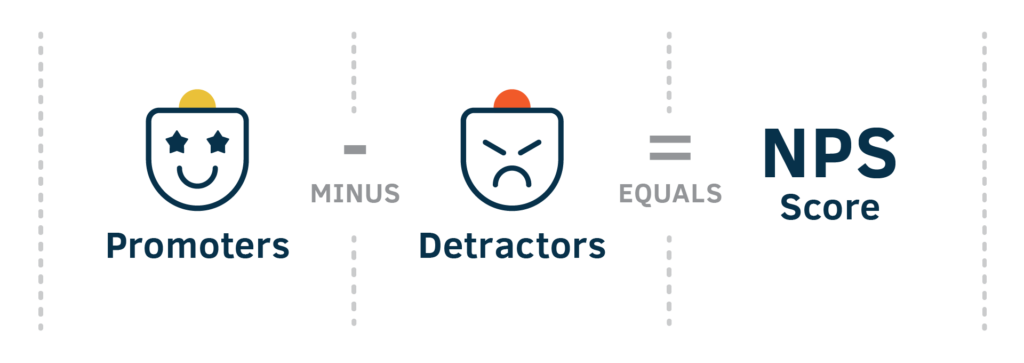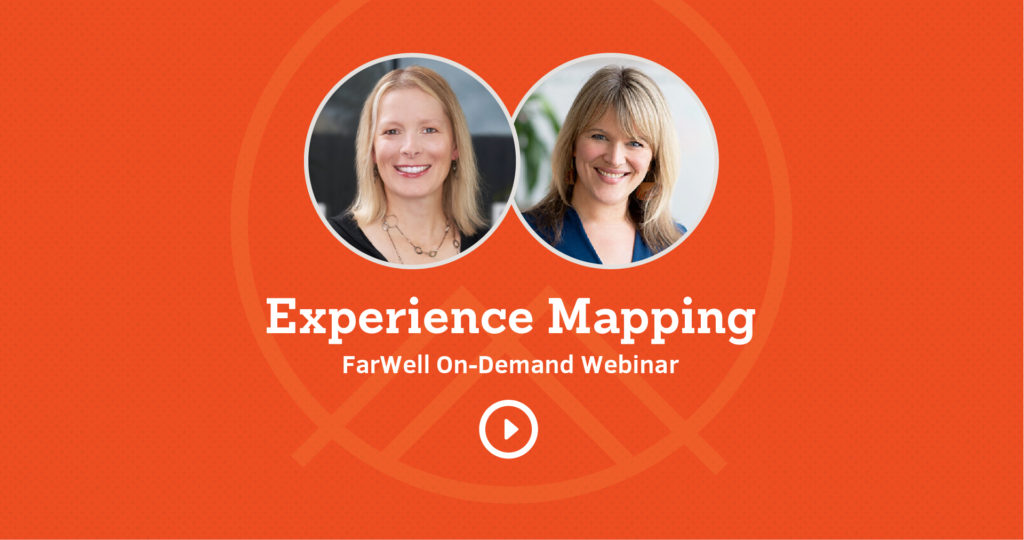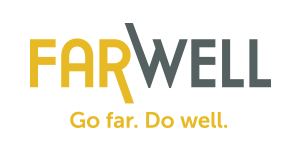Discover advisor articles and other FarWell resources.
Go far. Do well. Call (800) 987-2015
Four Steps to Build and Measure the ROI of Customer Experience (CX) in Your Organization

Finding the Value in CX and EX: Making a Business Case for “Experience” Strategies Webinar
October 29, 2020
Kanban Your Way to Effective Project Management | How Change Practitioners, Project Managers, and Organizational Leaders Can Use Kanban to Achieve More, Faster
December 3, 2020Customers can love working with your company so much that they will tell everyone all about you. The concept of customer referrals is not new knowledge, but organizations often overlook the power of their employees as advocates for a customer-centric mindset. In order to make the transition from employee to customer advocate, your organization has to clearly define your customer service culture and make sure employees understand their role in fulfilling the customer experience promised by your brand.
It’s time to look beyond the obvious. Of course, businesses want their customers to be happy and all employees should know that and support it. But what happens when a customer complains? Is it defined how the employee should handle the complaint? What about less obvious issues, such as when a customer is clearly uncomfortable or dissatisfied and everyone can feel it, but the customer isn’t verbally complaining? Are employees equipped to address this and proactively help this customer before the dissatisfaction turns to anger?
Years ago, when I managed a customer support team, I was working with one of my employees on improving his written communication with our clients. I wanted him to communicate more often, even if there wasn’t an obvious update. I wanted him to let the client know the matter was still being worked on and that we cared about them and their issue. Also, I coached him to use more pleasantries, such as “thank you for your patience” in his communication. The employee didn’t understand the fuss and responded with, “My customers aren’t unhappy.”
I was shocked! “Not unhappy” was not what we were shooting for, but clearly, that wasn’t the message we had been sending to our employees if this was how he felt. He was on the customer service team! How could he not just know that we wanted our customers to be happy, excited, pleased, amazed? It gave me a new perspective and helped me see that I was not providing the necessary vision for my team to help them understand how we wanted to treat our customers.
The ROI of Customer Experience (CX)
In today’s market, customer service is not just a differentiator, it is THE differentiator. However, it comes with a price tag. It costs money to train employees, monitor quality, collect and listen to your client feedback and so on. How much is enough and how do you calculate the return on investment? You may know that a Customer Experience (CX) program is just good common sense, but how do you build a business case to prove it?
This is a common question asked by businesses and it’s a tricky one to answer. Some baseline information is needed before that question can be answered. Here are the steps to take to get there.
Step 1: Map and Measure Customer Happiness
If your company is not currently measuring customer satisfaction, that’s a good place to start. This can be done in a variety of ways, but the industry standard is to measure customer delight with a Net Promoter Score (NPS).
How to calculate your Net Promoter Score (NPS).
Your NPS rating will tell you if your customers love your business enough to recommend it or if there’s work to be done in this area. NPS is typically generated by surveying your customers on various aspects of your business and asking them one crucial question…
“On a scale of 0 to 10, how likely are you to recommend us to your friends and/or colleagues?”
Promoters are those who answer with a 9 or 10, passive are those who respond with a 7 or 8, and those answering with a score of 6 or lower are considered detractors.
Net promoter score equation.
To calculate your NPS, you calculate the percent of respondents who are promoters and subtract from that number the percent who are detractors.

NPS ratings vary by industry; a score of 50 could be excellent for one type of business, while for another it’s not so good.
Customer Journey Mapping
Another way to put yourself and your employees in a customer mindset is to complete a customer journey mapping workshop. Customer journey mapping involves identifying all the touchpoints the customer has with your company during a defined lifecycle. Each touchpoint will then be rated for how the customer feels during that transaction.
The result is a visual of what your customer is experiencing as they work with various areas of the business. This diagram can be used as a powerful tool to help the company understand the impact of each interaction with the customer and will help pinpoint areas for improvement.
Once you’ve measured and understood how your customers feel, you’ll likely want to take action to make improvements.

Step 2: Define Success
Before jumping in, define what success will look like for each area targeted for improvements. This success is more than “We want our customers to be happy or happier than they are today.” Be specific, such as, “We want to amaze our customers with our quick turn-around time (and then define what “quick” means, in measurable units).” or “Our customer was blown away by our willingness to get on a plane the next day and fly out to help solve the problem on site.”
Additionally, identify what this increased customer satisfaction should drive. Do you want to increase the percentage of new, referral business? Do you want to reduce customer turnover or increase renewals? Investing in these changes should result in a bottom-line improvement.
Step 3: Drive a Customer-Centric Culture
Finally, align your company culture with your customer service goals. The culture of your business is critical to how people are treated, both internally and externally. I once worked with a highly customer-focused company and I knew they loved their customers with Every. Word. They. Said. Those employees had amazing quality and customer service engrained in their every behavior. It was amazing and their thousands of loyal customers knew it too.

Analyzing your company culture and creating a framework for how your business wants to treat customers is an important process to enable reaching customer service goals.
Be intentional about your language.
Remember that choosing words carefully to define this culture is important. Do you want your employees to “make sure the customer is satisfied” or do you want them to “stop at nothing to make sure the customer has an outstanding experience?” Having—and articulating and reinforcing—a vision for what you want your customer experience to be is incredibly important.
Manage culture changes.
Carefully consider how to roll out culture changes to your employees. A thoughtful, structured approach can help employees understand the intention of the changes and give them time to ask questions and adopt a different mindset. Additionally, it should be clear to the employees what impact a culture change has on their day-to-day tasks. A plan should also be in place to measure how the employees feel during the roll out and if the changes take hold over time.
Step 4: Calculate the ROI of Customer Experience
After these steps are completed and it’s known what areas to improve, we’re back to calculating that pesky ROI. It should be clearer now how to measure the cost of improving the areas of dissatisfaction.
Customer experience ROI equation.
(Expected cost savings + Improved profitability) – (Cost to implement program improvements–people/process/technology) = ROI
As with most internal projects, teams will need to be created, resource time allocated, scope and duration approximated. Estimating the cost of these projects should be done in the same way these costs are estimated for any internal project.
Next, review the success criteria defined in Step Two. Set a target amount for the bottom-line benefits expected. Once you know the cost and target benefit value, you can calculate the ROI.
It may take time to achieve the expected ROI, and there may be a negative ROI in the first months/years of implementation before the ROI turns positive. It’s important to keep that in mind when setting expectations.
What about the culture shift? How is that measured and is it really necessary? In the end, doing the right thing for your customers not only feels good and right for both leaders and employees of your company, but also, customers are loyal to brands they believe are looking out for them.
If you’d like some additional insights into Step One of this process, FarWell’s Experience Mapping Webinar (part of FarWell’s Leadership Support Series) offers a great overview.





